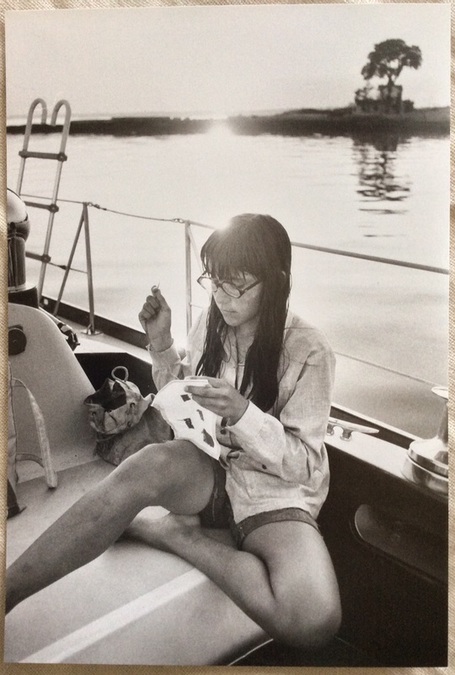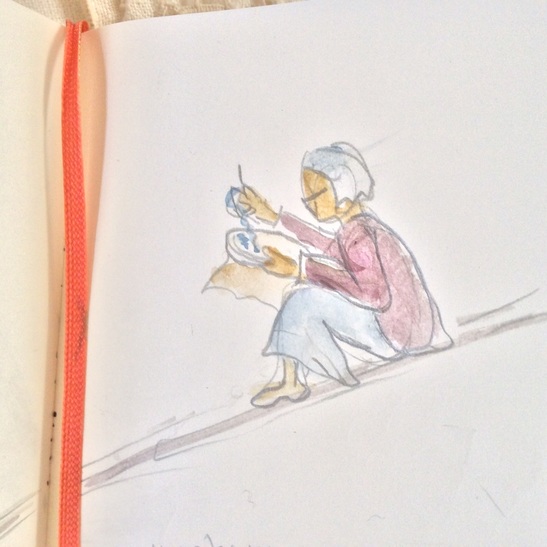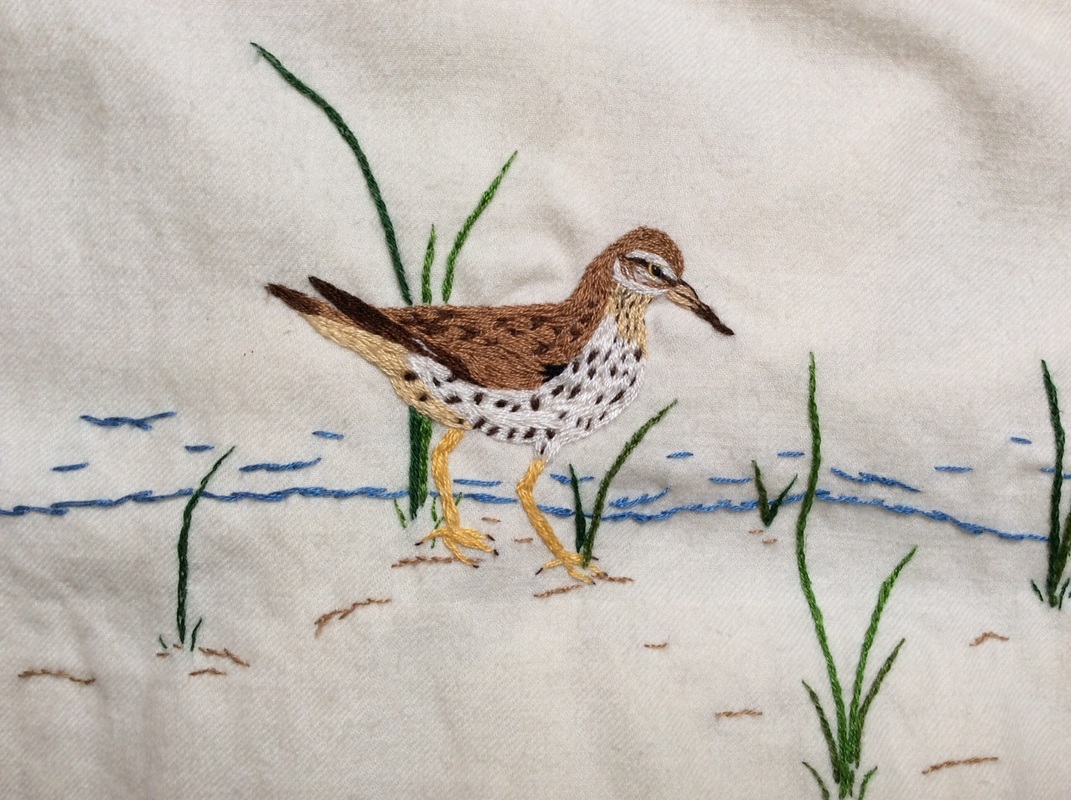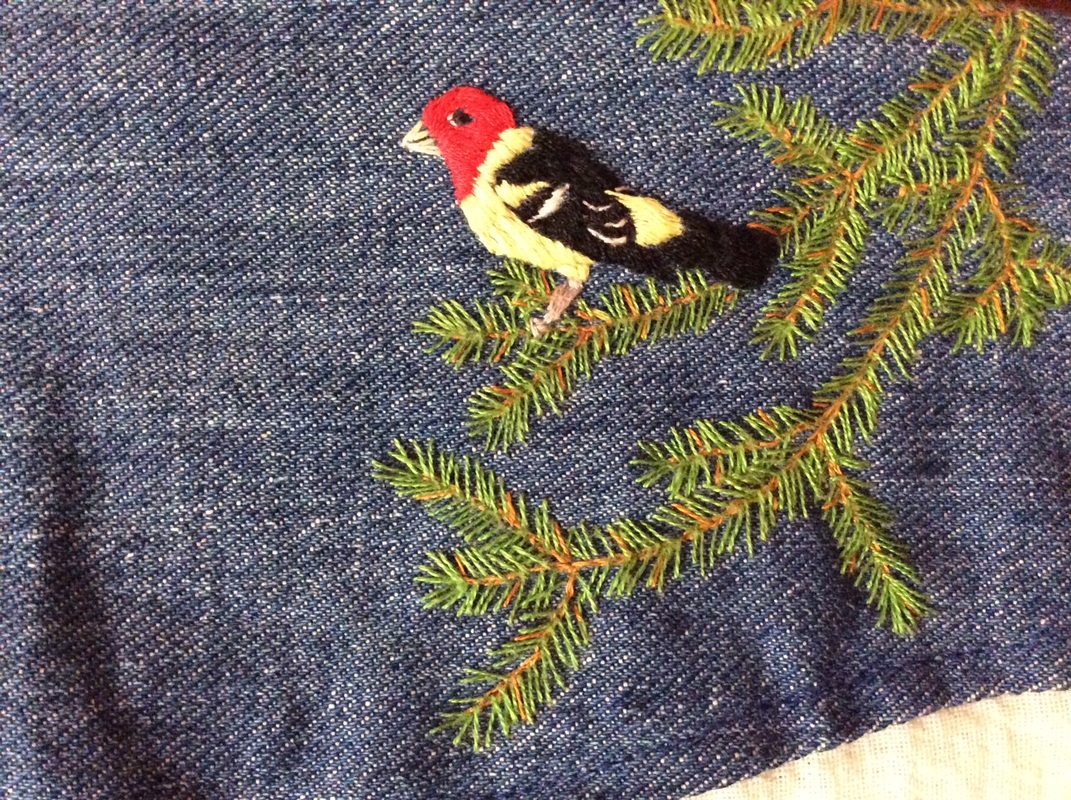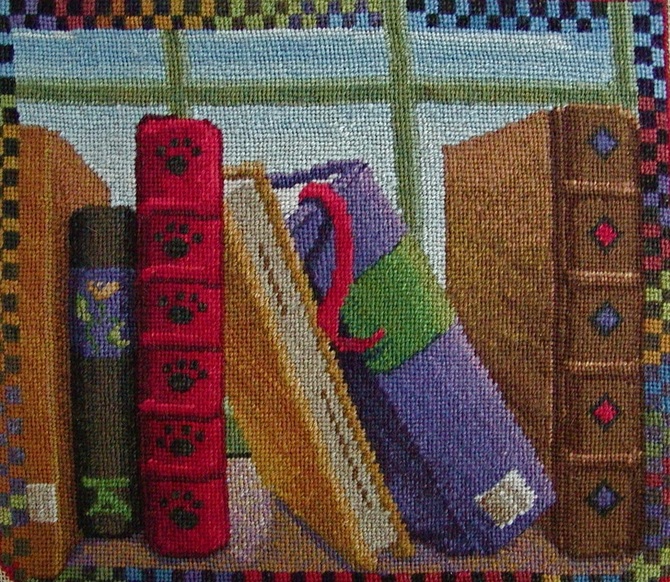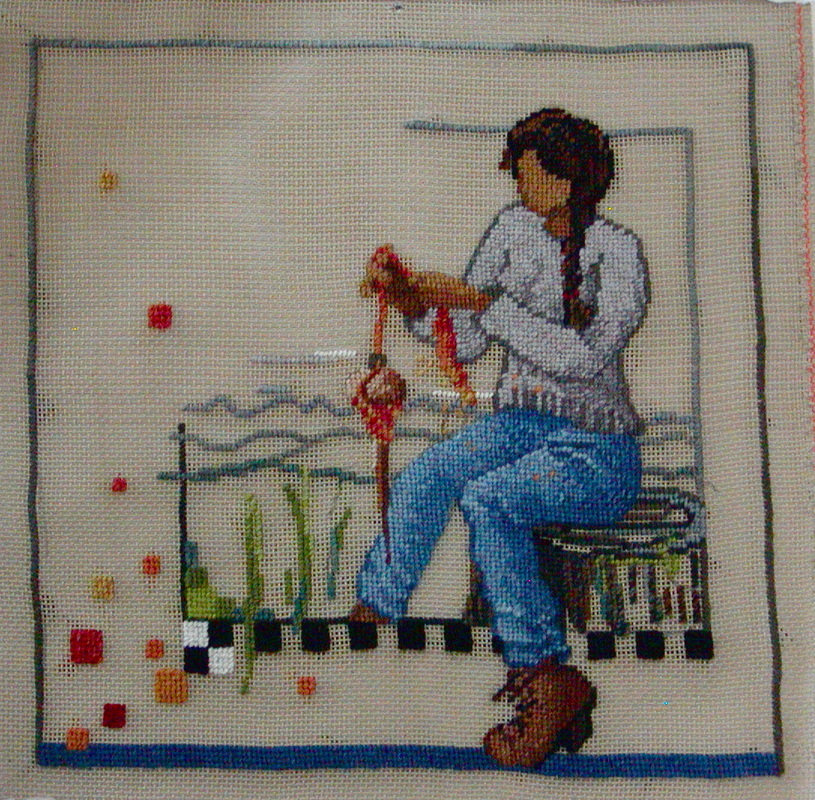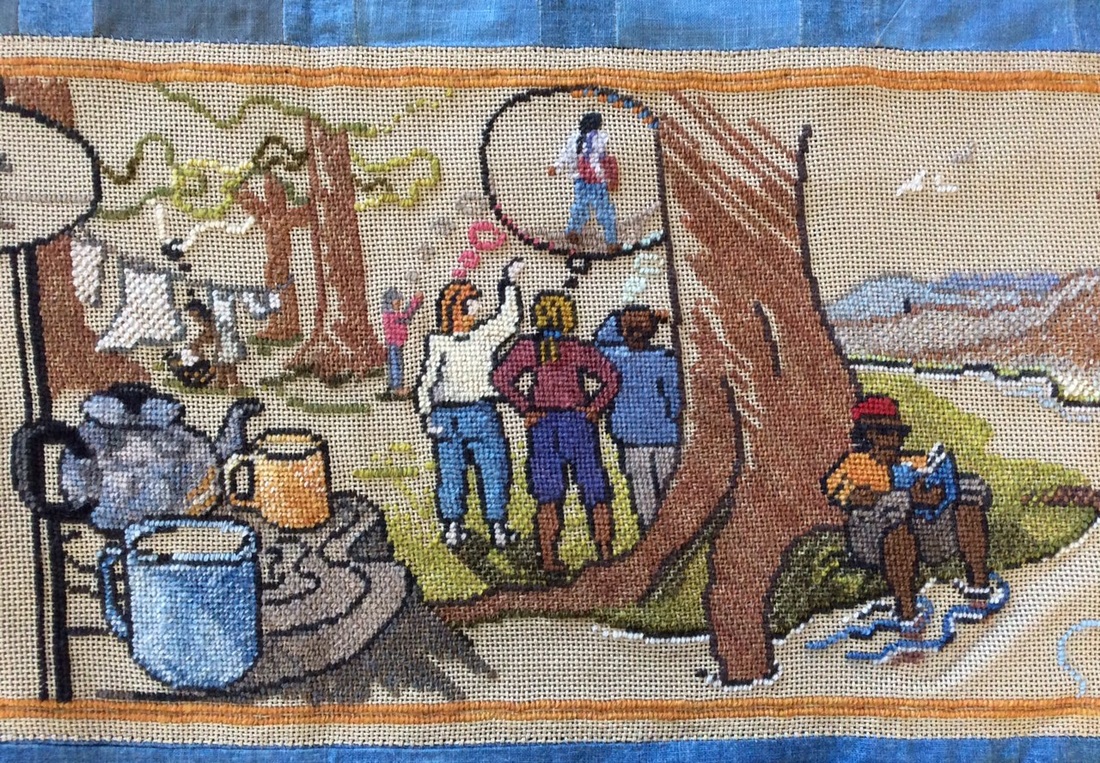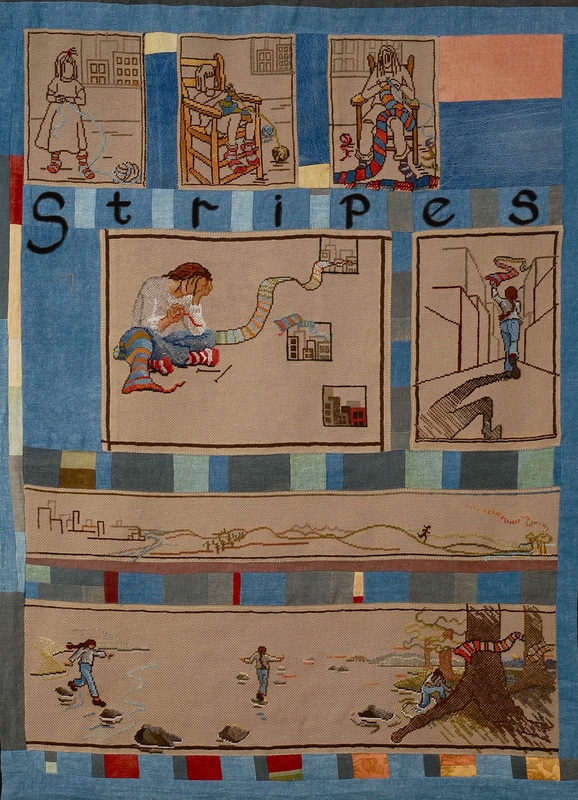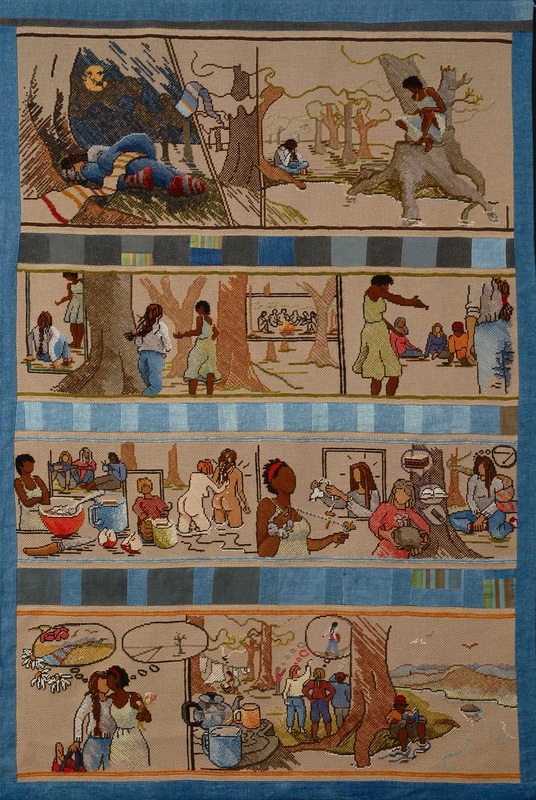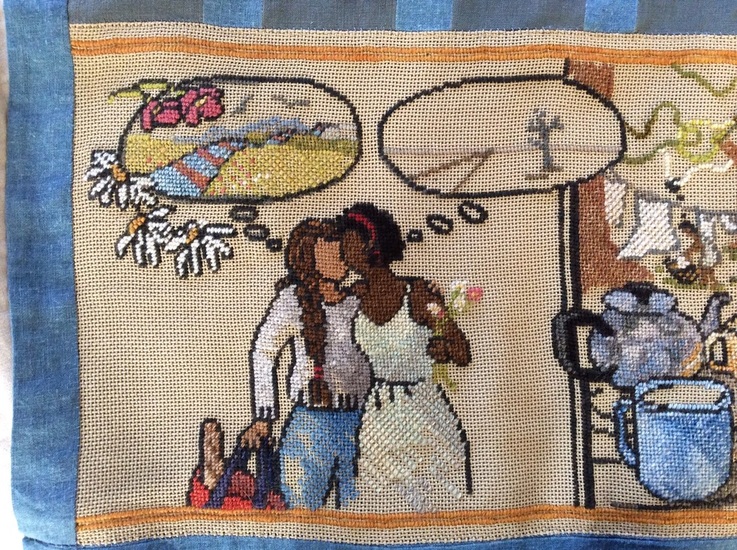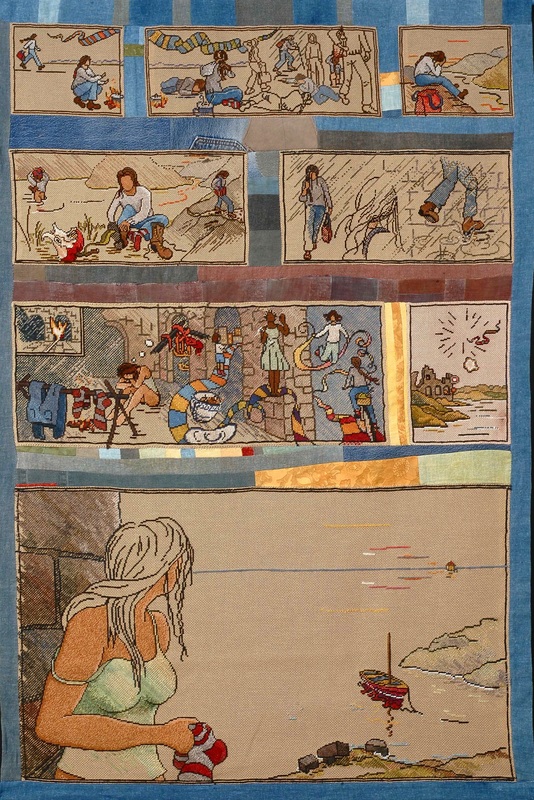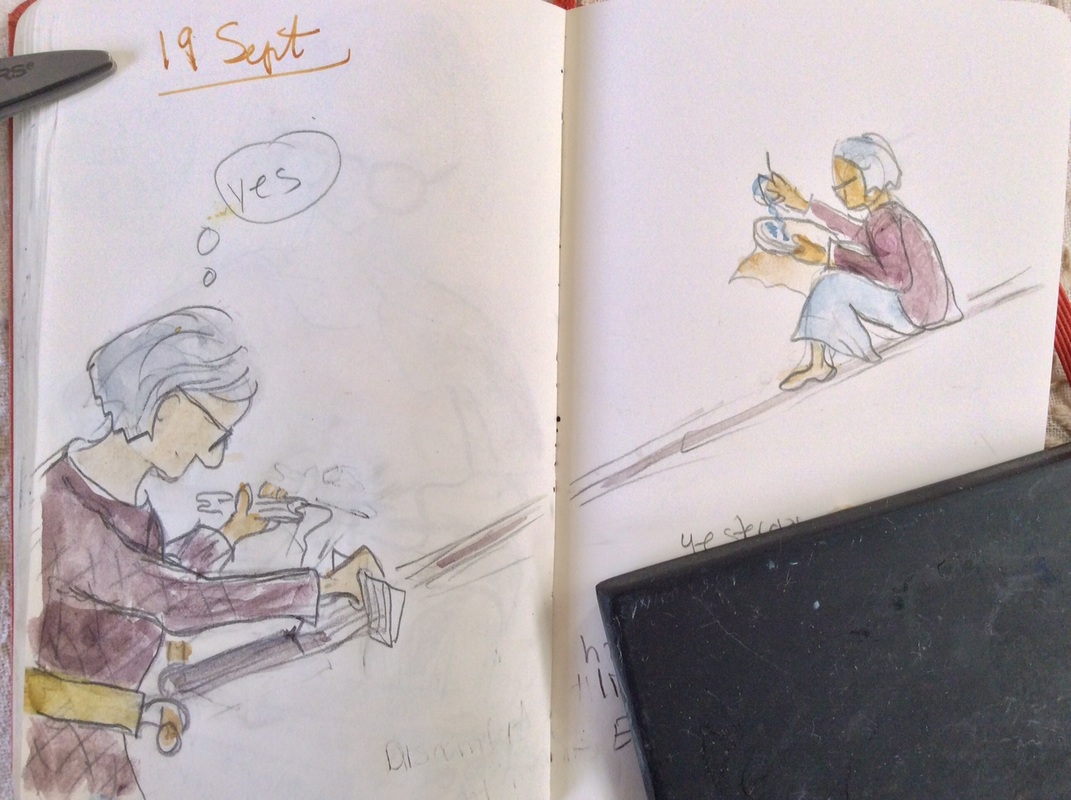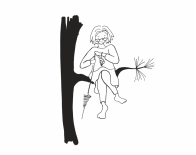I would be needlepoint.
but for as long as I can remember,
the marriage and yarn and image has been a given,
and that certainty began with with needlepoint.
My grandmother, unless she was driving somewhere very fast in her pink Volkswagen bug or cooking something with lots of butter, always had a piece of stitching (needlepoint or crewel or sometimes knitting), in her hands.
So did (and do) at least two of her five daughters (my aunts, not my mother who was otherwise occupied getting a masters degree, learning to program computers back and teaching mathematics). Grandma's stitching was an endlessly compelling and yet unknowable backdrop to many of my youthful imaginings.
Once, in my youthful innocence, I asked her why she stitched other people's drawings instead of making up her own. Apparently that was a ridiculous question,
but I was left with a longing to give form to my own ideas--
if only I could figure out how.
My Mother and Aunts now have most of Grandma's work (rugs, bags and more cushions than I can possibly imagine), but I've never needed the physical manifestation of her stitching to know that, should I ever need it, permission to draw with yarn and needle was already granted.
stitching on canvas has remained in the background--
a secret hobby the mere mention of which causes some tapestry weavers to draw back in horror if the two words appear in the same sentence.
"Needlepoint is NOT Tapestry!!!!!"
Of course it is not.
But neither is it a lesser medium.
(It probably has not escaped your notice that my needlework and tapestries look an awful lot alike....)
In the midst of constant weaving, knitting, teaching, spinning, dyeing, drawing, hanging out with my husband and son and doing the dishes, the last thing I needed was another thing.
Indeed, I don't recall quite why I picked up needle and canvas 10 or 11 years ago,
though I know a conversation with Sarah Haskell about embracing the grid of warp and weft (she loved it, I spent my weaving life trying to defy it), had something to do with it, as did learning about Knotted Pile from Sara Lamb.
Then I began to study comics.
And that, for a time, was that.
dyeing, drawing, dreaming,
wild and magical and playful freedom to do as I pleased --
I'd never seen or done anything quite like it before.
When not tied up in knots about where the story was going
or how best to tell it once I knew,
I was entirely at my ease.
Needlepoint Comics provided a kind of elbow room I was not, at the time, getting with tapestry,
though those familiar with my work may notice that Stripes is connected to the tapestry book Casting Off, picking up where that book ends.
In fact, most of the work on these comics took place as I was writing the novel that would become the Rough Copy series of tapestries -- sequential narrative finding its way into tapestry in a different form.
When I began to actually weave those 13 pieces though, I had neither time nor creative energy for anything else -- and certainly not something as demanding and compelling as needlepoint.
And it was those tapestries that are responsible --
the addiction to words that was not entirely (even remotely) cured by weaving them,
led to unscripted writing at the loom (no cartoon),
which generated an idea that I might be able to write longer sentences on a backstrap loom,
and sucked me down the rabbit hole I'm currently in (discussed in myriad previous blog posts),
and then the lightbulb moment (lights are good down in rabbit holes),
that I have been weaving the linen grid I longed for back when I was making those giant comics panels above, but couldn't figure out how to do without a floor loom.
Sometimes I am so dense.
the work is calling
and I have not addressed the technical aspects of the thing
-- yarn, sett, materials etc--
which is what I meant to talk about.
Ah well.
Maybe next time.
I'll know more by then anyway.
See ya!
